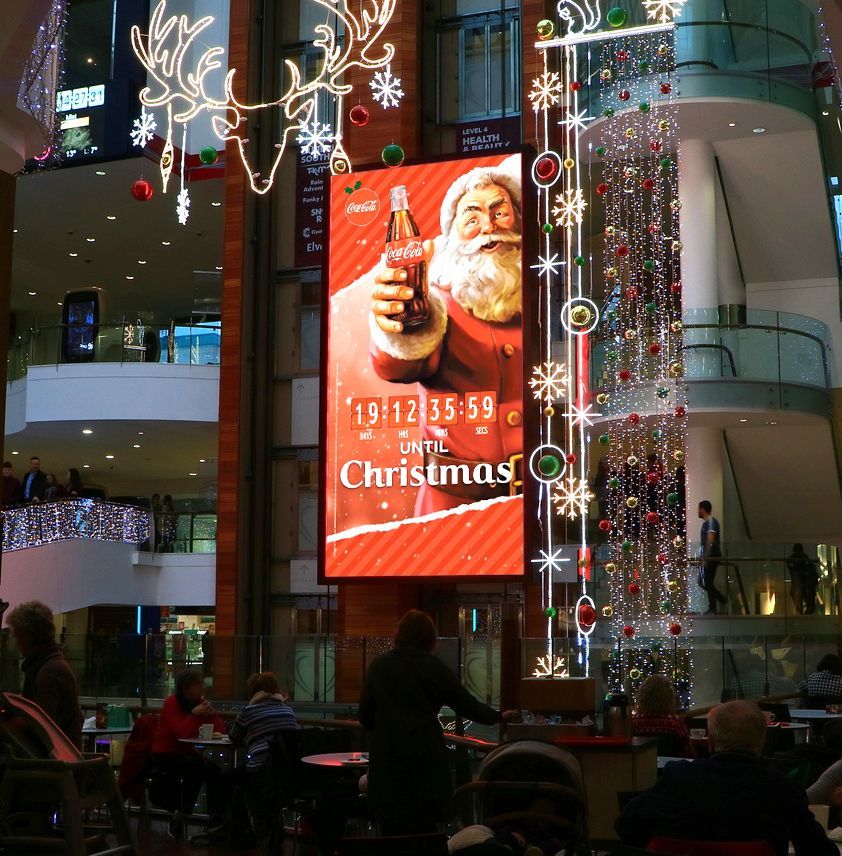How Out-of-Home Advertising Can Attract Traffic During the Holidays
The holiday season is a crucial time for businesses, as it presents a unique opportunity to capture the attention of holiday shoppers. Out-of-home (OOH) advertising, encompassing traditional billboards and innovative digital displays, offers a dynamic and effective strategy for attracting traffic. By strategically leveraging OOH campaigns, brands can engage target audiences, drive foot traffic, and increase sales during this busy period. This article explores how OOH advertising can effectively attract holiday traffic, incorporating semantically related phrases to enhance search engine visibility and contextual relevance.
Understanding OOH Advertising
OOH advertising refers to any advertising that reaches consumers outside their homes. It includes billboards, bus shelters, transit posters, digital displays, and more. OOH advertising is uniquely positioned to capture the attention of a broad audience, as it is visible in high-traffic areas and public spaces. During the holiday shopping season, when people are on the move and actively seeking gifts and experiences, OOH advertising plays a vital role in influencing consumer behavior.

Leveraging Limited-Time Offers
One key strategy for successful OOH advertising during the holidays is promoting limited-time offers. The sense of urgency created by limited-time promotions can drive immediate action from consumers. Advertisements emphasizing exclusive holiday deals, discounts, and promotions encourage shoppers to visit stores or websites promptly.
For example, a digital OOH ad for a popular retail brand might feature a countdown timer showing the days and hours left for a special holiday sale. By highlighting limited-time offers, businesses can tap into the excitement of the holiday season and motivate consumers to act swiftly.
Capturing the Attention of Holiday Shoppers
During the holiday season, shoppers are inundated with advertising messages from various sources. To stand out, OOH campaigns must be visually captivating and creatively designed. Utilizing vibrant colors, eye-catching visuals, and compelling messages helps capture the attention of passersby.
Augmented reality (AR) is a powerful tool to enhance OOH advertising by providing interactive and immersive experiences. Brands can create AR experiences that allow consumers to interact with products virtually, making the advertisement more engaging and memorable. For instance, an AR-enabled billboard could allow shoppers to visualize how a piece of furniture would look in their home or try on virtual accessories.

Engaging Target Audiences
OOH advertising allows brands to reach diverse audiences by strategically placing ads in locations where their target demographics are likely present. During the holiday season, shopping malls, airports, and busy city centers become prime locations for OOH campaigns.
To maximize engagement, brands can use data-driven insights to tailor their OOH messages to specific audiences. Businesses can deliver personalized and relevant content that resonates with potential customers by analyzing consumer behavior and preferences. For instance, a luxury brand may focus its OOH efforts on affluent neighborhoods, while a family-friendly brand might target areas near schools and playgrounds.
Integrating Digital OOH and Social Media
Digital OOH advertising offers the advantage of real-time updates and dynamic content. During the holidays, brands can use digital billboards to display live feeds, social media interactions, and user-generated content. Encouraging consumers to share their holiday experiences using branded hashtags can create a sense of community and increase brand visibility.
Integrating social media with OOH campaigns amplifies their reach and impact. Brands can encourage consumers to take photos with OOH ads and share them on social platforms for a chance to win prizes. This approach boosts brand engagement and extends the campaign's reach beyond the physical location.
Creating a Cohesive OOH Campaign
A successful OOH campaign during the holiday season requires a cohesive and well-coordinated approach. Brands should ensure consistency in messaging and design across all OOH touchpoints. Each campaign element should reinforce the brand's holiday theme and key messages, from billboards to transit ads.
For example, a retail brand running a holiday OOH campaign could use a consistent color scheme, logo placement, and tagline across all advertisements. This consistency creates a strong brand identity and reinforces brand recognition among consumers.
Measuring the Impact of OOH Advertising
To evaluate the effectiveness of OOH advertising during the holidays, brands should track key performance metrics such as foot traffic, website visits, and sales conversions. Advanced analytics tools can provide valuable insights into consumer engagement and campaign performance.
By analyzing data collected from digital OOH displays, brands can assess which locations and messages drive the most traffic. This data-driven approach enables businesses to optimize their campaigns in real time and allocate resources more effectively.
Conclusion
OOH advertising is a powerful tool for attracting traffic and driving sales during the holiday season. By leveraging limited-time offers, captivating visuals, and data-driven insights, brands can effectively engage target audiences and enhance their holiday campaigns. Integrating digital OOH with social media further amplifies brand reach and fosters community engagement. As businesses navigate the competitive holiday landscape, OOH advertising remains a vital component of their marketing strategy, capturing the attention of holiday shoppers and creating memorable experiences that drive consumer action.
TALK TO A PRO
We're here to bring your brand to life!
Stay Connected with BrandXR
Create Augmented Reality for Free!
Create, Publish, and Measure 3D Augmented Reality Experiences Without Having to Code.














